Our Approach to Sustainability
AOT operates on the basis of social responsibility and sustainable development under the concept of “being an airport that is a good corporate citizenship and friendly neighbor to the community” (Corporate Citizenship Airport), with an objective of promoting sustainable development outwardly through responsible business conducts, enriching relationships and confidences with domestic and international stakeholders, and balancing economic, social, and environmental values.

Sustainable Development Governance Structure
AOT appoints Social Responsibility for the Sustainable Development Committee and Social Responsibility for Sustainable Development Committee (at the airport level) under the supervision of the Good Governance Committee to steer the sustainable development and tasked with following duties and responsibilities:
Corporate Governance Committee
Consisting of at least 3 members of AOT Board of Directors and at least 1 Independent Director
- Establish good corporate governance and social responsibility policies for AOT sustainable development
- Promote and advise good practices in accordance with the principles and practices of relevant regulators and internationally recognized authorities.
- Encourage integrated AOT sustainability operations.
- Monitor, evaluate, and review policies, codes of conduct, and good corporate governance practices of AOT.
- Monitor, review, and evaluate AOT performance to promote social responsibility and develop organization sustainability in accordance with international standards, including sustainability issues and sustainable development reports.
Social Responsibility for Sustainable Development Committee
Consisting of at least 3 members of AOT Board of Directors and at least 1 Independent Director
- Define operational guidelines for social responsibility in order to strive organization sustainable development in accordance with national and international practice standards, state enterprise plan, and AOT’s sustainable development master plan.
- Supervise the implementation of social responsibility to develop the organization for sustainability in accordance with the policies and plans of AOT.
- Establish guidelines for public relations, monitoring, evaluation, and reporting performance to the Corporate Governance Committee, covering sustainability issues and sustainability reports.
Social Responsibility for Sustainable Development Committee (Airport Level)
Consisting of personnel from CRS Department of the Head Quarter and Special Affairs Department of each airport
- Develop and implement social responsibility initiatives with stakeholders to create shared value between communities, society, and AOT.
- Conduct public relations on Corporate Social Responsibility (CSR) and the environment.
- Report the performance to the Social Responsibility for Sustainable Development Committee, including preparing the sustainable development report.
Sustainable Development Policies
AOT defines sustainable development policies following globally and internationally accepted standards, essentially the United Nations Sustainable Development Goals, Dow Jones Sustainability Index (DJSI), the core subjects of Social Responsibility Standard (ISO 26000) Guidance from the International Organization for Standardization (ISO) and the Stakeholder Engagement Standard (AA1000 SES) for example. These policies consist of six main topics:
Good Corporate Governance
Operate the business through good corporate governance principles and becoming aware of social responsibility following the sustainable development guidances.
Fair Business Conduct
Avoid business monopoly, conflict of interests, and misconduct of all kinds.
Responsibility to Customers
and Innovative Development
Foster the implementation of technology and innovation to deliver customer experiences that are beyond expectation.
Human Rights and Employee Benefits
Respect human rights and emphasize on employee treatments in both equality and occupational health, and support social contribution.
Community Development Participation
Balance the business benefits with the community and environmental impact and promote the joint value delivery between AOT and the community.
Guidelines for issuing an information disclosure
Disclose operating performance and information to the public on the basis of transparency and reliability.
See more details
Sustainable Development strategy
AOT specifies the sustainable development strategies to strive towards being an airport that is a good corporate citizenship and friendly neighbor to the community (Corporate Citizenship Airport). Three major strategies are:
| Strategy 1 Sustainability Management |
Strategy 2 Stakeholder Engagement |
Strategy 3 Sustainability Initiatives |
|
|---|---|---|---|
| Target | Being airports that are excellent in sustainability management | Being airports that are recognized by stakeholders and participate in Sustainable Development. | Being airports that generate values for the community and the society. |
| Objective | To enhance the sustainability assessment results and organization quality, including the integration of sustainable development and business practices. | To promote recognition and elevate impact mitigation plans to cover all stakeholders, be it community or society level. | To create shared values of business, community and society as well as integrate and drive sustainable business |
See more details
AOT Sustainable Development Framework
AOT operates on social responsibility for sustainable development in accordance with the Sustainable Development Operations Framework. It was developed from an analysis of impacts, risks, opportunities, and key sustainability issues on the organization. covering economic, social, and environmental dimensions.
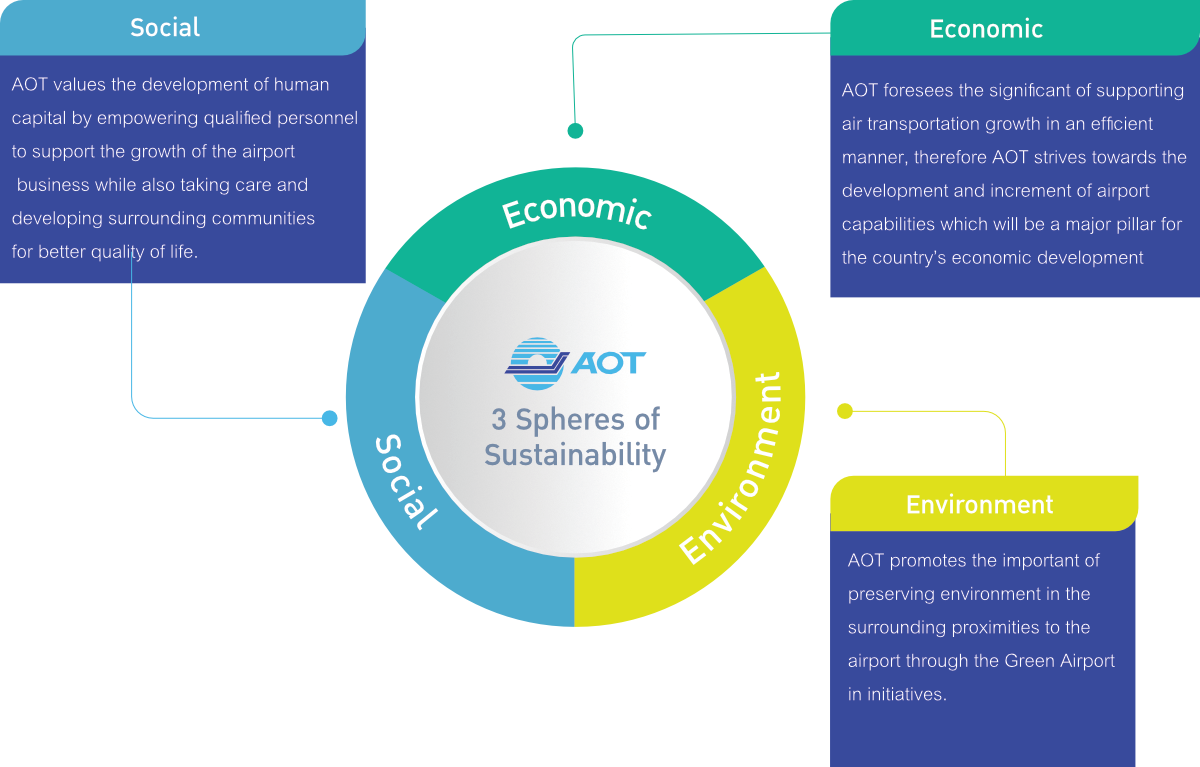
Sustainability Development Roadmap
AOT has formulated a plan for sustainable development in the period of 2015 - 2023 for concrete implementation. with details as follows:
| Recognition | SD Master Plan | Evolution | Roll Out | Transformation | Corporate Citizenship Airport | Smartest Airport |
|---|---|---|---|---|---|---|
| 2015 | 2016 | 2017 | 2018 | 2019 | 2020 - 2022 | 2023 |
| Promote right awareness for sustainability in the airport business | Develop the sustainability development plan | Build innovative changes in pilot departments and promote stakeholder's participation | Operate an organization-wide sustainability development and conduct assessment to design the sustainability development management plan. | Discover right sustainability development mechanisms to create transformation. | Protect the surrounding community and promote the ability to formulate social activities. | Delivering Sustainable Value in Airport Business for Sustainable Growth. |
AOT Sustainable Development Goals
To support the achievement of 17 core principles of the United Nations Sustainable Development Goals (SDGs) which has been set as a guide for government, private, and not-for-profit organizations to align their corporate objectives with sustainability development goals, AOT has realized. the importance and synergy of collaboration from all parts by connecting strategies in the social responsibility management for sustainability development under the Sustainable Development Master Plan with sustainable development goals (SDGs) and discloses them through the details of relevant implementation on each goal to the organization's Annual Sustainable. Development Report.
| Economic Dimension | Sub Goals |
|---|---|
| Corporate Governance, Risk Management, and Work Compliance 
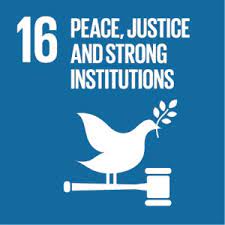 |
SDG 9.1 Develop quality, reliable, sustainable and resilient infrastructure, including regional and trans-border infrastructure, to support economic development and human well-being, with a focus on affordable and equitable access for all. SDG 16.5 Substantially reduce corruption and bribery in all its forms. |
Customer Satisfaction 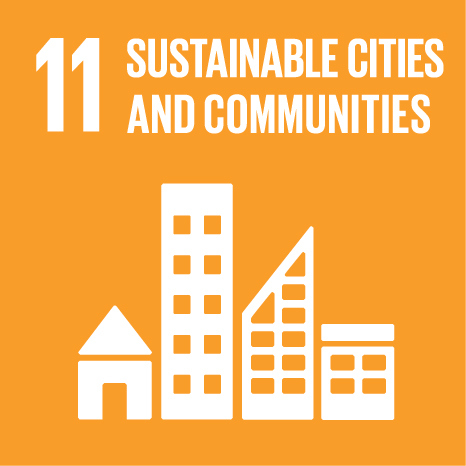
 |
SDG 11.2 By 2030, provide access to safe, affordable, accessible and sustainable transport systems for all, improving road safety, notably by expanding public transport, with special attention to the needs of those in vulnerable situations, women, children, persons with disabilities and older persons. SDG 16.B Promote and enforce non-discriminatory laws and policies for sustainable development. |
Digital Technology and Innovation  |
SDG 9.1 Develop quality, reliable, sustainable and resilient infrastructure, including regional and trans-border infrastructure, to support economic development and human well-being, with a focus on affordable and equitable access for all. SDG 9.B Support domestic technology development, research and innovation in developing countries including by ensuring a conducive policy environment for inter alia industrial diversification and value addition to commodities. |
Information Technology Security and Privacy |
SDG 9.1 Develop quality, reliable, sustainable and resilient infrastructure, including regional and trans-border infrastructure, to support economic development and human well-being, with a focus on affordable and equitable access for all. SDG 8.1 Sustain per capita economic growth in accordance with national circumstances, and in particular at least 7% per annum GDP growth in the least-developed countries. |
Business Alliances 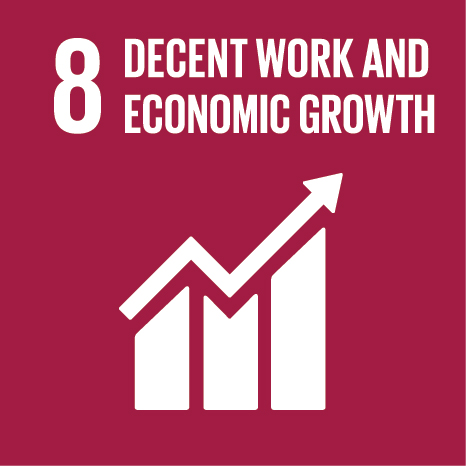

|
SDG 11.2 By 2030, provide access to safe, affordable, accessible and sustainable transport systems for all, improving road safety, notably by expanding public transport, with special attention to the needs of those in vulnerable situations, women, children, persons with disabilities and older persons. SDG 17.6 Enhance North-South, South-South and triangular regional and international cooperation on and access to science, technology and innovation, and enhance knowledge sharing on mutually agreed terms, including through improved coordination among existing mechanisms, particularly at UN level, and through a global technology facilitation mechanism when agreed. |
Airport Capacity and Accessibility |
SDG 11.2 By 2030, SDG 11.2 By 2030, provide access to safe, affordable, accessible and sustainable transport systems for all, improving road safety, notably by expanding public transport, with special attention to the needs of those in vulnerable situations, women, children, persons with disabilities and older persons. |
Sustainable Supply Chain 
|
SDG 8.1 Sustain per capita economic growth in accordance with national circumstances, and in particular at least 7% per annum GDP growth in the least-developed countries. SDG 8.4 Improve progressively through 2030 global resourceefficiency in consumption and production, and endeavor todecouple economic growth from environmental degradation in accordance with the 10-year framework of programs onsustainable consumption and production with developedcountries taking the lead. SDG 8.8 Protect labor rights and promote safe and secureworking environments of all workers, including migrantworkers, particularly women migrants, and those in precariousemployment. SDG 12.7 Protect labor rights and promote safe and secureworking environments of all workers, including migrantworkers, particularly women migrants, and those in precariousemployment. |
| Environmental Dimension | Sub Goals |
|---|---|
Energy and Climate Change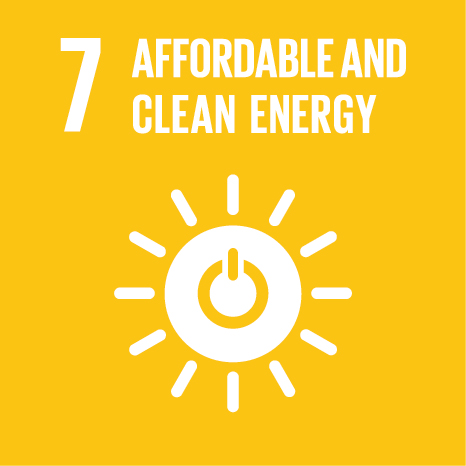

|
SDG 7.2 Increase the share of renewable energy in the global energy mix by 2030. SDG 7.3 Promote the improvement of global energy efficiency by doubling it by 2030. SDG 13.1 Strengthen resilience and adaptive capacity to climate related hazards and natural disasters in all countries. SDG 13.2 Integrate climate change measures into national policies, strategies, and planning. SDG 13.3 Improve education, awareness raising and human and institutional capacity on climate change mitigation, adaptation, impact reduction, and early warning. |
Natural Resource and Environmental Management (Water and Wastewater Management, Noise Impact, Circular Economy, and Biodiversity Diversity).
|
SDG 6.3 By 2030, improve water quality by reducing pollution, eliminating dumping and minimizing release of hazardous chemicals and materials, halving the proportion of untreated wastewater and substantially increasing recycling and safe reuse globally. SDG 6.4 By 2030, substantially increase water-use efficiency across all sectors and ensure sustainable withdrawals and supply of freshwater to address water scarcity, and substantially reduce the number of people suffering from water scarcity. SDG 6.5 By 2030, implement integrated water resources management at all levels, including through transboundary cooperation as appropriate. SDG 11.6 By 2030, reduce the adverse per capita environmental impact of cities, including by paying special attention to air quality, municipal and other waste management. SDG 12.4 By 2020, achieve the environmentally sound management of chemicals and all wastes throughout their life cycle, in accordance with agreed international frameworks, and significantly reduce their release to air, water and soil in order to minimize their adverse impacts on human health and the environment. SDG 12.5 By 2030, substantially reduce waste generation through prevention, reduction, recycling, and reuse. SDG 12.6 Encourage companies, especially large and trans- national companies, to adopt sustainable practices and to integrate sustainability information into their reporting cycle. |
| Social Dimension | Sub Goals |
|---|---|
Airport Safety and Security  |
SDG 3.3 By 2030 end the epidemics of AIDS, tuberculosis, malaria, and neglected tropical diseases and combat hepatitis, water-borne diseases, and other communicable diseases. SDG 3.9 By 2030 substantially reduce the number of deaths and illnesses from hazardous chemicals and air, water, and soil pollution and contamination. SDG 11.2 By 2030, provide access to safe, affordable, accessible and sustainable transport systems for all, improving road safety, notably by expanding public transport, with special attention to the needs of those in vulnerable situations, women, children, persons with disabilities and older persons. SDG 11.7 By 2030 provide universal access to safe, inclusive and accessible, green and public spaces, particularly for women and children, older persons and persons with disabilities. |
Occupational Health and Safety |
SDG 3.3 By 2030 end the epidemics of AIDS, tuberculosis, malaria, and neglected tropical diseases and combat hepatitis, water-borne diseases, and other communicable diseases. SDG 3.9 By 2030 substantially reduce the number of deaths and illnesses from hazardous chemicals and air, water, and soil pollution and contamination. SDG 8.8 Protect labor rights and promote safe and secure working environments of all workers, including migrant workers, particularly women migrants, and those in precarious employment. |
| Human Rights |
SDG 10.2 By 2030 empower and promote the social, economic and political inclusion of all irrespective of age, sex, disability, race, ethnicity, origin, religion or economic or other status. |
Valuable and Fulfilling Work |
SDG 3.4 By 2030 reduce by one-third pre-mature mortality from non-communicable diseases (NCDs) through prevention and treatment, and promote mental health and well-being. SDG 4.4 By 2030, substantially increase the number of youth and adults who have relevant skills, including technical and vocational skills, for employment, decent jobs and entrepreneurship. SDG 8.5 By 2030 achieve full and productive employment and decent work for all women and men, including for young people and persons with disabilities, and equal pay for work of equal value. SDG 8.8 Protect labor rights and promote safe and secure working environments of all workers, including migrant workers, particularly women migrants, and those in precarious employment. |
Community and Society Involvement 
 |
SDG 4.A Build and upgrade education facilities that are child, disability and gender sensitive and provide safe, non-violent, inclusive and effective learning environments for all. SDG 7.2 Increase substantially the share of renewable energy in the global energy mix by 2030. SDG 8.3 Promote development-oriented policies that support productive activities, decent job creation, entrepreneurship, creativity and innovation, and encourage formalization and growth of micro-, small- and medium-sized enterprises including through access to financial services. SDG 8.5 By 2030 achieve full and productive employment and decent work for all women and men, including for young people and persons with disabilities, and equal pay for work of equal value. SDG 8.9 By 2030 devise and implement policies to promote sustainable tourism which creates jobs, promotes local culture and products. SDG 11.6 By 2030, reduce the adverse per capita environmental impact of cities, including by paying special attention to air quality, municipal and other waste management. SDG 11.7 By 2030, provide universal access to safe, inclusive and accessible, green and public spaces, particularly for women and children, older persons and persons with disabilities. SDG 12.2 By 2030 achieve sustainable management and efficient use of natural resources. SDG 12.B Develop and implement tools to monitor sustainable development impacts for sustainable tourism which creates jobs, promotes local culture and products. SDG 14.1 By 2025, prevent and significantly reduce marine pollution of all kinds, particularly from land-based activities, including marine debris and nutrient pollution. SDG 15.2 By 2020, promote the implementation of sustainable management of all types of forests, halt deforestation, restore degraded forests and substantially increase afforestation and reforestation globally. SDG 17.17 Encourage and promote effective public, public- private, and civil society partnerships, building on the experience and resourcing strategies of partnerships. |
Last Updated: April, 17 2024
